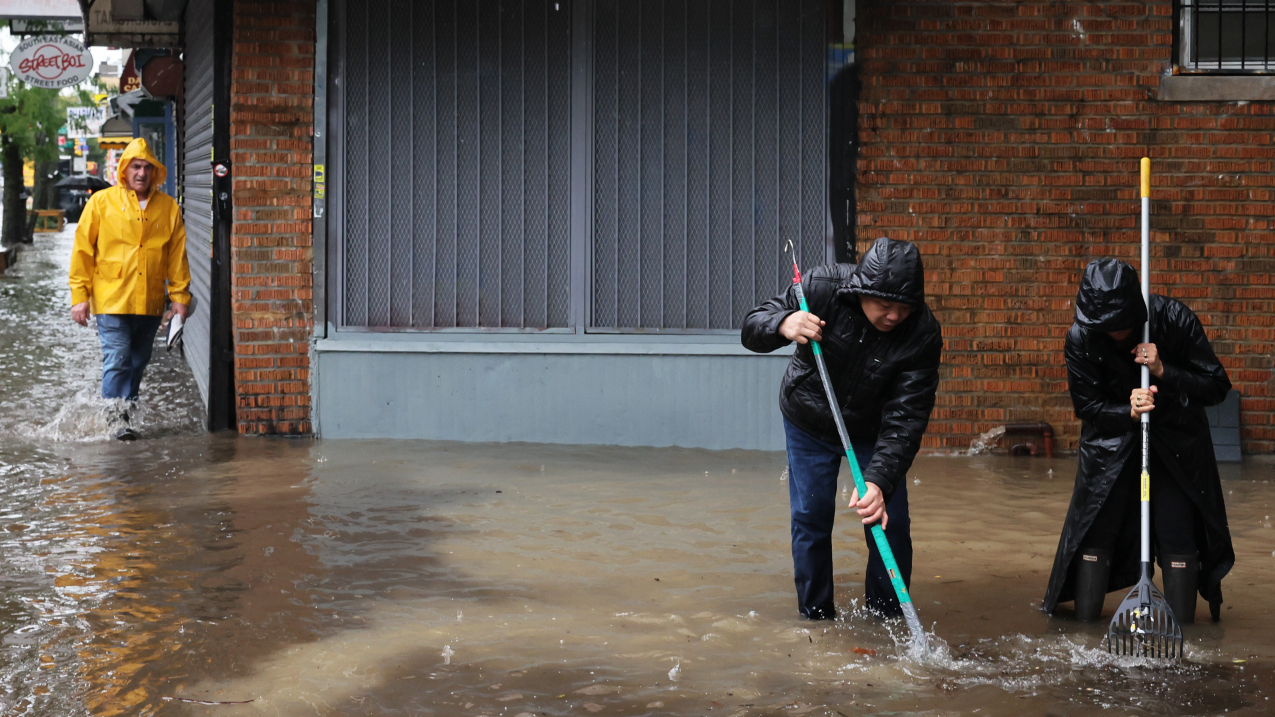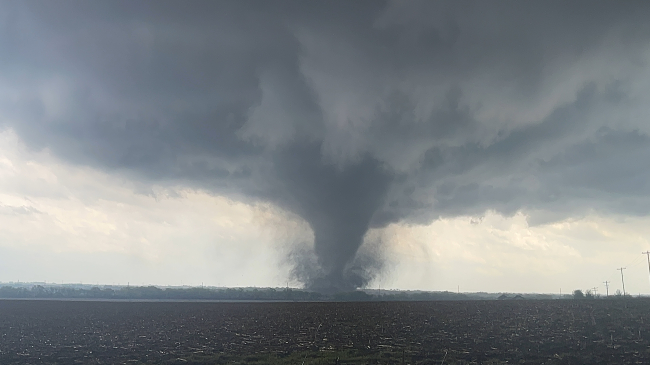Last month marked by heat waves, tropical systems and flooding rain

NEW YORK, NEW YORK – SEPTEMBER 29, 2023: People attempt to clear a storm drain on Stratford Avenue amid flash flooding in the Flatbush neighborhood of New York City’s Brooklyn borough. September 2023 brought everything from flooding rain to tropical systems and blistering heat to parts of the U.S. (Image credit: Michael M. Santiago/Getty Images)
September 2023 was remarkably warm and quite dry across the contiguous United States.
The month also brought record heat and flooding rains to parts of the nation, according to scientists from NOAA’s National Centers for Environmental Information.
Below are highlights from NOAA’s September U.S. climate report:
Climate by the numbers
September 2023
The average September temperature across the contiguous U.S. was 67.8 degrees F — 2.9 degrees above the 20th-century average — making it the seventh-warmest September in NOAA’s 129-year climate record.
New Mexico and Texas both saw their warmest Septembers on record, while Minnesota had its second warmest. An additional 10 states saw their top-10 warmest Septembers on record.
The average precipitation last month was 2.10 inches (0.39 of an inch below average), ranking the month in the driest third of all Septembers in the historical record.
Ohio had its fifth-driest September on record with Indiana and Michigan seeing a top-10 driest September on record. Connecticut had its third-wettest September on record, while Nevada and New Jersey both had one of their top-10 wettest Septembers.
Year to date (YTD, January through September 2023)
The year-to-date average temperature for the contiguous U.S. was 57.0 degrees F — 1.9 degrees above average — ranking as the 10th-warmest such YTD on record.
Mississippi and Florida had their warmest January–September period on record while Delaware and Maryland saw their second warmest. An additional 24 states had a top-10 warmest such YTD on record. No state experienced a top-10 coldest event for this nine-month period.
Looking at the year-to-date average precipitation, the total was 23.32 inches (0.12 of an inch above average), ranking in the middle third of the record.
Massachusetts ranked second wettest, while Connecticut ranked third wettest on record for this YTD. Six additional states — Maine, Nevada, New Hampshire, Rhode Island, Vermont and Wyoming — ranked among their top-10 wettest for this period. Conversely, Iowa ranked 10th driest for this nine-month period.

Billion-dollar disasters
From January through the end of September 2023, the U.S. was struck by 24 separate weather and climate disasters, each with losses exceeding $1 billion. These disasters included:
- 18 severe storm events.
- Two flooding events.
- One winter storm.
- One tropical cyclone (Idalia).
- One wildfire event.
- One drought/heat wave event.
The total cost of these events (not including the costs of Idalia) exceeds $67.1 billion.
Since 1980, when NOAA started to track these events, the U.S. has sustained 372 separate weather and climate disasters where overall damages/costs reached or exceeded $1 billion (including the Consumer Price Index adjustment to 2023). The cumulative cost of these events exceeds $2.630 trillion.

Other notable highlights from this report for September
Persistent heat brought record-breaking temperatures in parts of the nation
- It was the warmest September on record for Texas by nearly 0.3 of a degree F, and New Mexico tied 2015 and 2019 for its warmest September on record.
- A total of 111 counties had their warmest September on record, while an additional 582 counties ranked in the top-10 warmest for the month. There are 3,143 counties in the U.S.
- High temperatures and lack of rainfall resulted in persistent drought across parts of the Midwest, leading to near-record low water levels along parts of the Mississippi River and creating saltwater intrusion concerns in southern Louisiana.
- Record-high temperatures persisted across much of Puerto Rico and the U.S. Virgin Islands last month. San Juan recorded its warmest September and warmest month on record, while St. Croix’s Rohlsen Airport saw its warmest September on record.
Several notable storms impacted portions of the U.S.
- September 14-16: Hurricane Lee brought catastrophic flash flooding and damage to portions of New England.
- September 23: Tropical Storm Ophelia made landfall in eastern North Carolina and moved northward along the East Coast. Ophelia brought heavy rainfall and flooding from North Carolina to Massachusetts, resulting in significant damage and power outages.
- September 24-26: A bomb cyclone brought heavy precipitation to much of the Pacific Northwest, with Seattle seeing three of its five wettest days so far this year.
- September 29: A slow-moving storm brought heavy rainfall to New York City, grounding flights, flooding roads and subways and trapping residents in their homes. Parts of Brooklyn reported more than 7 inches of rainfall, while John F. Kennedy Airport received 8.65 inches — setting a new 24-hour precipitation record for the month which was previously set by Hurricane Donna in 1960.
More > Access NOAA’s latest climate report and download the images.



